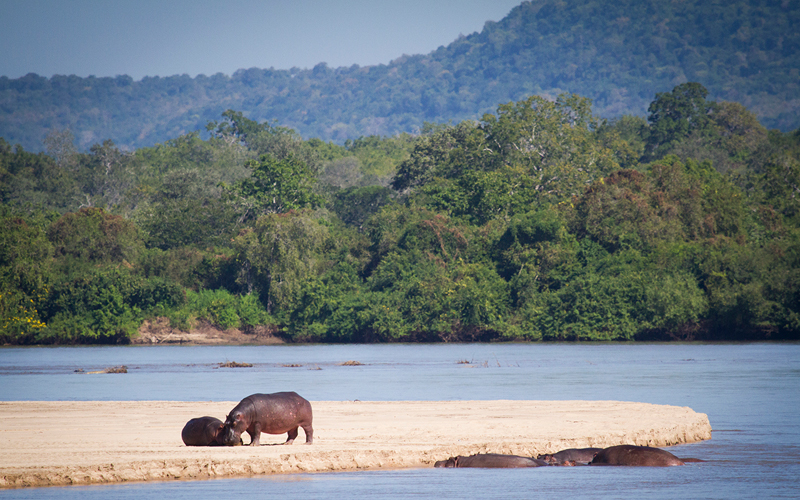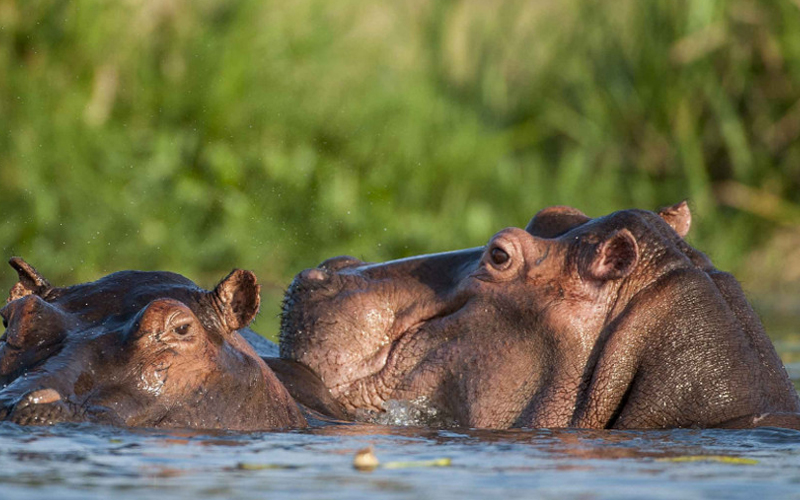
AREA
30,893 km2
LOCATION
Eastern Tanzania
Nyerere National Park
Nyerere National Park, part of the larger Selous ecosystem in southeastern Tanzania, is one of Africa’s largest protected wildlife areas, covering over 30,000 square kilometers (11,583 square miles). Named after Tanzania’s first president, Julius Nyerere, this UNESCO World Heritage site is known for its vast wilderness, meandering rivers, and incredible biodiversity. Nyerere offers visitors an authentic, less-crowded safari experience, with landscapes ranging from miombo woodlands to open grasslands and riverine swamps.
Dry and Wet Seasons
Dry Season (June to October): The dry season is the best time for wildlife viewing, as animals congregate near water sources. The weather is warm and dry, providing ideal conditions for game drives and boat safaris.
Wet Season (November to May): During the wet season, Nyerere becomes lush and green, with newborn animals and an influx of migratory birds. While some areas may be harder to access, the scenery is vibrant, and there are fewer visitors, offering a quieter safari experience.
Wildlife
Nyerere National Park is home to one of Africa’s largest populations of elephants and large numbers of lions, African wild dogs, and hippos. Other wildlife includes buffaloes, giraffes, zebras, wildebeests, and a variety of antelope species. The Rufiji River is rich in birdlife, with over 400 bird species, and is inhabited by hippos and crocodiles. Nyerere is also known for its large population of African wild dogs, offering one of the best chances to see these endangered predators in the wild.
Key Attractions

The Rufiji River
The lifeblood of Nyerere National Park, the Rufiji River hosts a range of wildlife and provides a unique setting for boat safaris.

Diverse Ecosystems:
With its vast size, Nyerere encompasses a variety of landscapes, including savannah, woodland, and wetlands, supporting a diverse range of species.

Less-Crowded Safaris
Nyerere’s remote location and large size make it ideal for travelers looking to explore Tanzania’s wilderness away from the crowds.
Wildlife Highlights
- Elephant Herds and African Wild Dogs: Nyerere hosts large elephant herds and one of the highest populations of wild dogs in Africa.
- Hippos and Crocodiles: The Rufiji River is home to abundant hippos and crocodiles, often seen on boat safaris.
- Birdlife: With over 400 bird species, Nyerere is a paradise for birdwatchers, especially during the migratory season.
Safari Activities

Game Drives
Morning and afternoon game drives offer opportunities to see elephants, lions, and other large mammals in their natural habitat.

Boat Safaris
A unique feature of Nyerere, boat safaris along the Rufiji River allow visitors to spot hippos, crocodiles, and bird species up close.
Walking Safaris
- Guided walking safaris offer a more intimate way to explore the bush and learn about the smaller flora and fauna.
Birdwatching
- With over 400 species, including the African skimmer and various kingfishers, Nyerere is excellent for birdwatching, especially during the wet season.
Best hotels and lodges in the Nyerere National Park
Nyerere National park is home to a variety of luxurious lodges, eco-friendly camps, and mid-range accommodations that provide comfortable stays and breathtaking views. Here are some of the best options:

